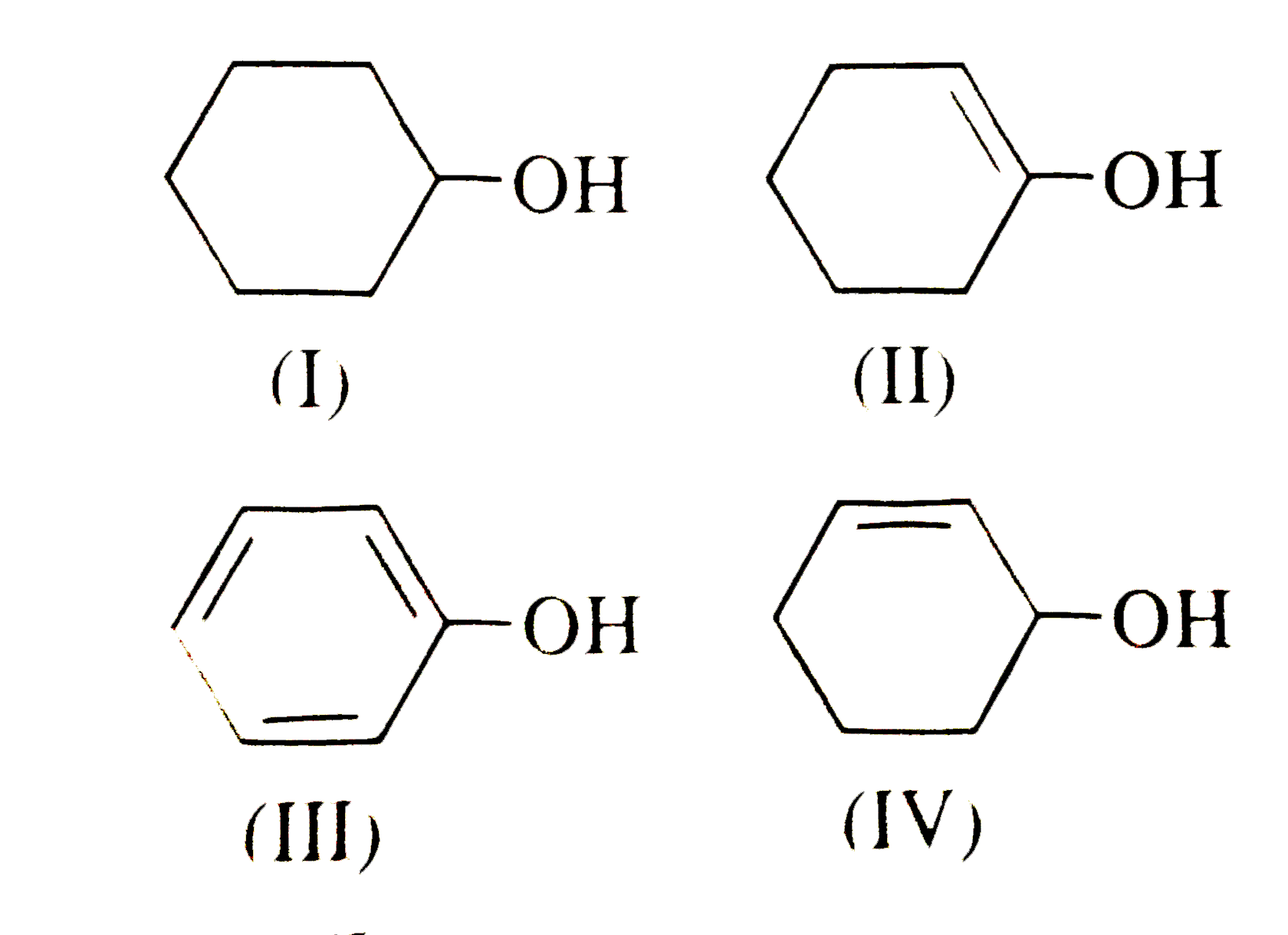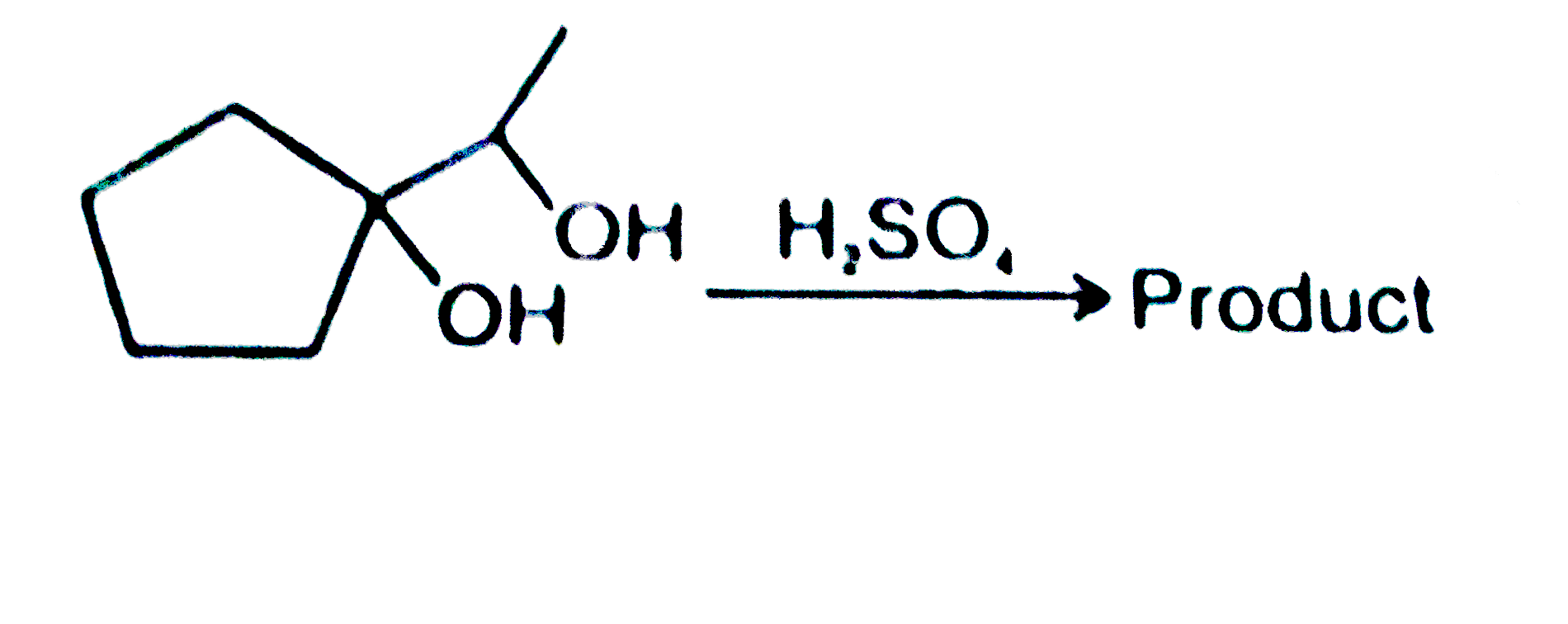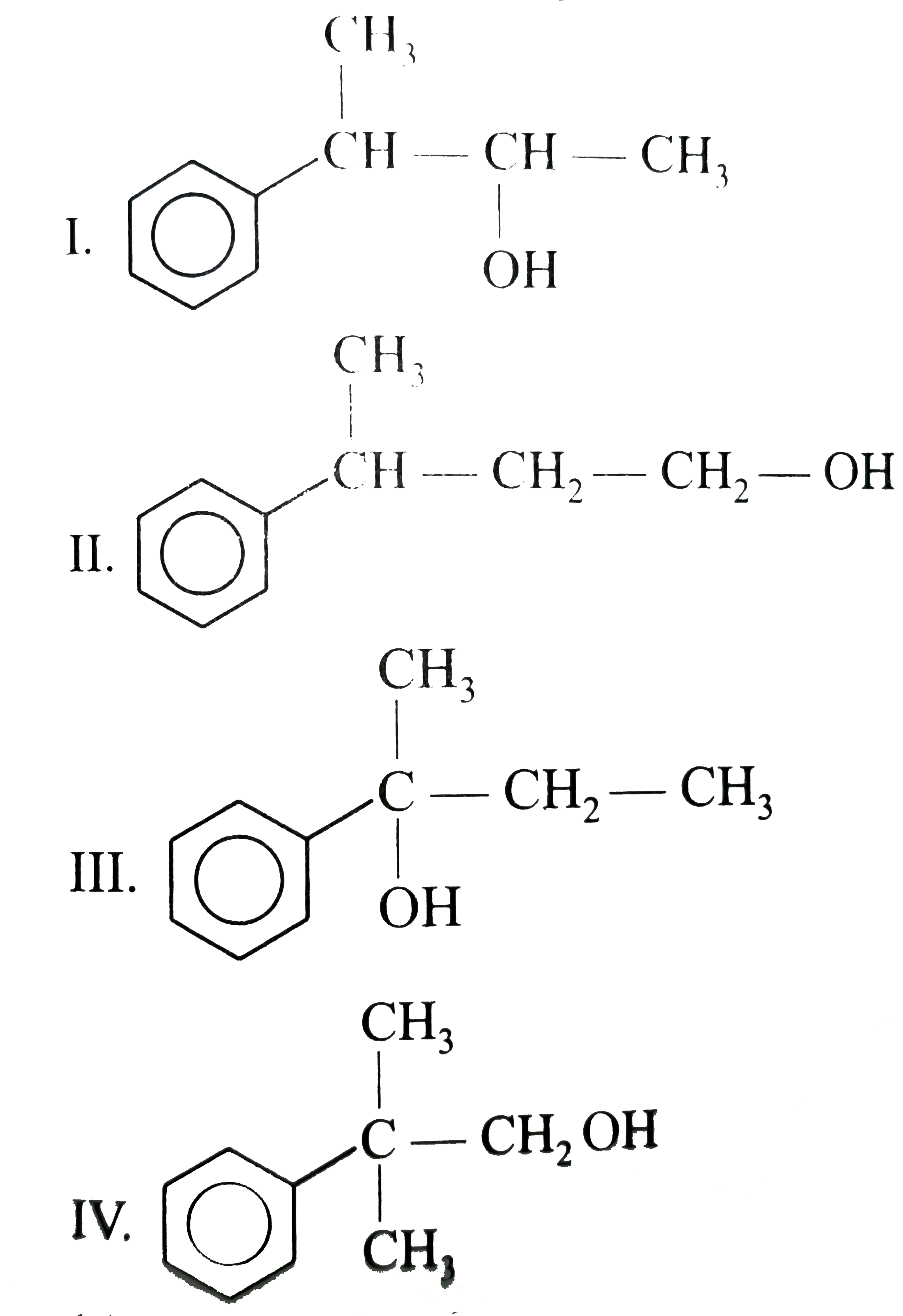Preparation of ethers by acid dehydration of secondary or tetiary alcohols is not a suitable method. Give reason.
Step-by-Step Solution:
1. Understanding Ether Preparation: Ethers can be synthesized through the acid dehydration of alcohols. This involves the removal of water (H2O) from alcohols in the presence of an acid catalyst.
2. Mechanism Overview: The mechanism begins with the protonation of the alcohol, forming a positively charged intermediate. For example, when ethanol (CH3CH2OH) is protonated, it forms CH3CH2OH2^+.
3. Nucleophilic Attack: Another molecule of alcohol acts as a nucleophile and attacks the carbon atom of the protonated alcohol. This leads to the formation of an ether and the elimination of a water molecule.
4. Primary vs. Secondary/Tertiary Alcohols: The method works well with primary alcohols because they favor the substitution reaction (SN2 mechanism). However, secondary and tertiary alcohols present a problem.
5. Steric Hindrance: In secondary and tertiary alcohols, there is significant steric hindrance. This makes it difficult for the nucleophile to approach the carbon atom for substitution. Instead, elimination reactions become favored.
6. Competing Reactions: In the case of secondary and tertiary alcohols, the protonated alcohol can undergo elimination (E1 or E2 mechanism) instead of substitution. This results in the formation of alkenes rather than ethers.
7. Conclusion: Due to the high tendency for elimination reactions in secondary and tertiary alcohols, they are not suitable for ether preparation via acid dehydration. This is primarily due to steric hindrance and competitive pathways leading to alkene formation.
Similar Questions
What is the order of dehydration of primary, secondary and tertiary alcohols?
View SolutionAcidic dehydration of the following alcohols is in the order :

View SolutionAlcohols undergo acid catalysed elimination reactions to produce alkenes. Because water is lost in the elimination , this reaction is called dehydration reaction. Secondary and tertiary alcohols always give E1 reaction in dehydration. Primary alcohols whose β-carbon is branched also give E1 reaction. The reactivity of alcohol for elimination reaction is tertiary alcohol > secondary alcohol > Primary alcohol.
Which of the following dehydration product (major ) is incorrect ?
View SolutionAlcohols undergo acid catalysed elimination reactions to produce alkenes. Because water is lost in the elimination , this reaction is called dehydration reaction. Secondary and tertiary alcohols always give E1 reaction in dehydration. Primary alcohols whose β-carbon is branched also give E1 reaction. The reactivity of alcohol for elimination reaction is tertiary alcohol gt secondary school gt Primary alcohol.
Identify the product in the given reaction :

View SolutionThe acidic dehydration method is not souitble for converting a tertiary alcohol into ether. Justify.
View SolutionThe relative rate of acid catalysed dehydration of following alcohols would be
I.
View SolutionGive explanation of following :
(i) During the preparation of esters from a carboxylic acid and an alcohol in the easter should be removed as soon as it is formed.
View SolutionAcid catalysed dehydration of 2-pentanol would give
View SolutionIn the acid catalyzed dehydration of alcohols to alkenes, the intermediate species formed is
View SolutionExplain why in the synthesis of ether (B) using (A) or A1 all the three standard methods for the perparation of ether (B) fail, i.e.,
I. Intermolecular dehydration of alcohols
II. Alkoxy mercuration-demercuration method
III. williamson's synthesis
Suggest an alternative method for the preparation of (B) by using (A) or (A1) .

View Solution
